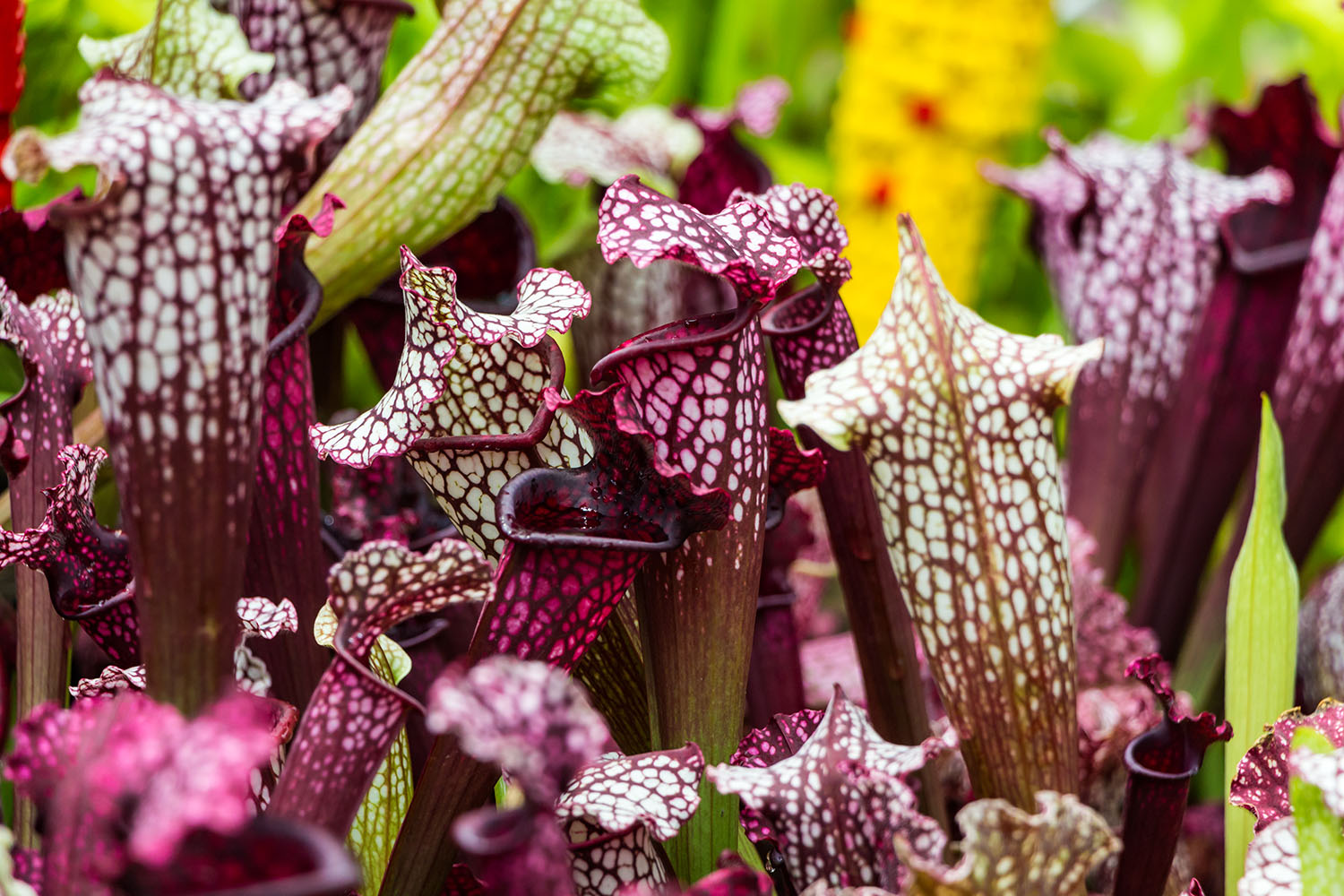By MIKE RALEY WPTF Weekend Gardener
Most of us have seen or have some knowledge of the most iconic plant in the world: It’s the “Venus Flytrap”, which is native to a small area of southeastern North Carolina. One of its cousins, also a native to the “Tar Heel State”, is the venerable “Pitcher Plant”. It is also carnivorous and has an equally insatiable appetite for insects. This is another plant I don’t have in my landscape. I do need one after seeing the crop of the Purple Pitcher Plant at the North Carolina Botanical Gardens in Chapel Hill.
“Sarracenia purpura” is a striking, fascinating, sneaky plant that just loves creatures like bugs, spiders, and small frogs! Find it growing in marshes and bogs along the eastern seaboard, all the way up into zone 3. It has upright pitcher-shaped leaves that are open to collect rainwater. Insects are attracted to droplets of nectar on the rim of the leaves and the leaf color. Interested insects and amphibians crawl into the tube where some hairs grow to prevent them from getting back out. There is of course water at the bottom that contains special enzymes. The victims eventually fall in the water, drown, and are digestive. What a meal! The folks at the extension service point out the larvae of the Pitcher Plant fly which feeds on the remains of dead insects.
To provide the correct environment for the Pitcher Plant you need a bog garden that you may happen to have on your tract of land or you have to create one which can be tedious and time-consuming. Probably not! Fortunately, they can be grown in specially prepared containers.
Now how do you design a bog garden you ask? Find a location in a really low location on your property, possibly near a downspout or even a ditch. You need at least 6 hours of sun too. That’s essentially full sun. Create a perimeter and dig down 12 to 18 inches. Still want to tackle this? Then place a pond liner in the hole and make sure it extends up the sides of the hole. The liner will need to be anchored with rocks, etc. Cover the bottom with some sand. Add a soil mix of 5 parts peat moss and 1 part sand. You can also add some sphagnum moss. It likes very acidic soil. Anne Clapp would recommend playground sand. Water the soil mix thoroughly. Now add a variety of bog-loving plants to the mix. For the Pitcher Plant, don’t get any of the soil in its crown, keep the soil consistently wet, as it sports shallow, fibrous roots. Don’t fertilize the Pitcher Plant and don’t feed it insects. If the plant is happy, it will use natural abilities to sustain itself. I have read that they can live 50 years!
There are many varieties of Pitcher Plants available for sale in catalogs and you may find them in a carnivorous plant nursery. However, they are now rare in the wild because of poaching and changes to their habitat, so don’t harvest one if you happen upon it. I have read that over 97 percent of the Pitcher Plant’s habitat has been destroyed by development.
The “Sarracenia purpura” does have a couple of disease issues and few insect problems believe it or not. It can’t eat everything! Try if you must to grow one. But if you are not that ambitious, at least appreciate this unique carnivorous native wonder plant while it is still around.
